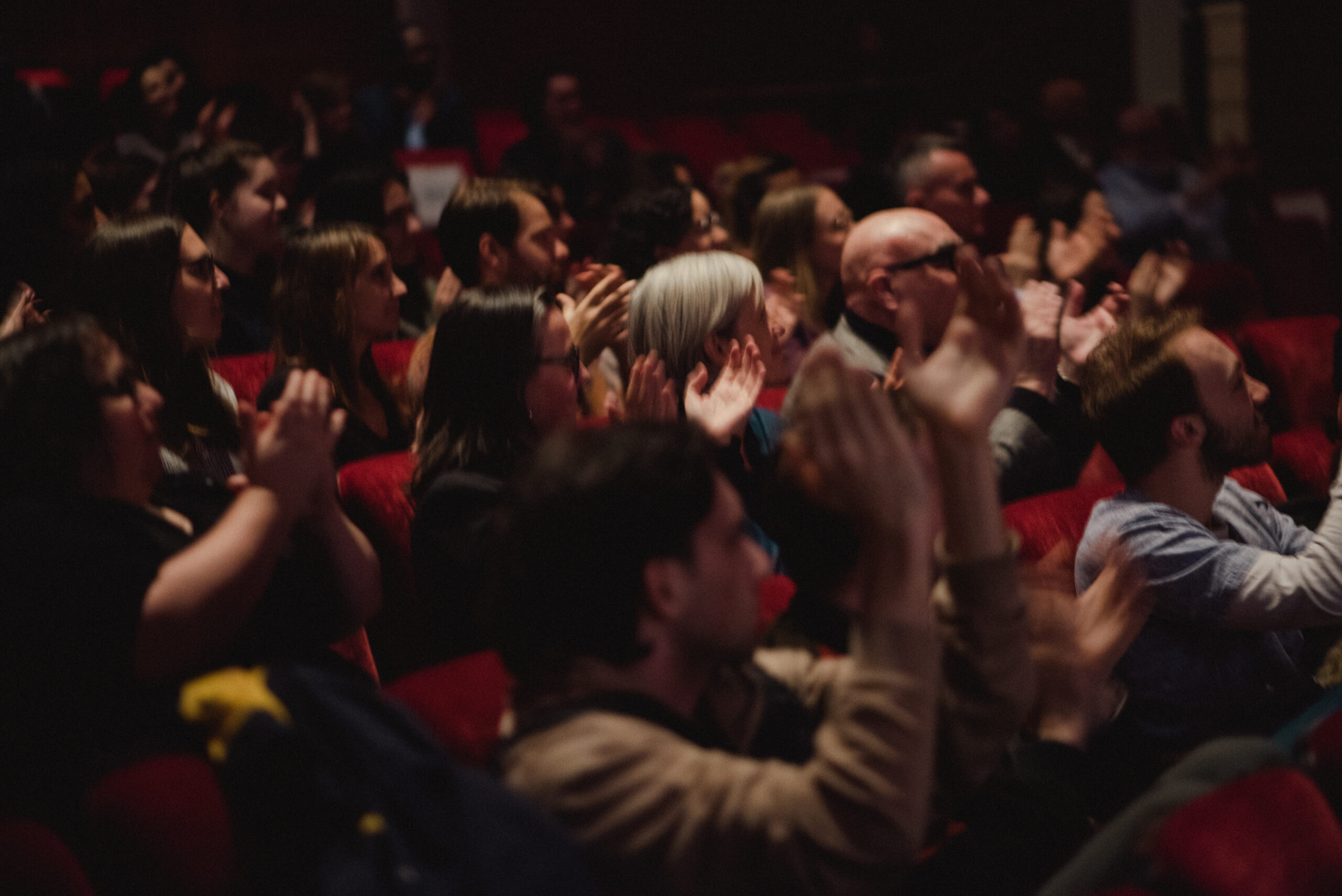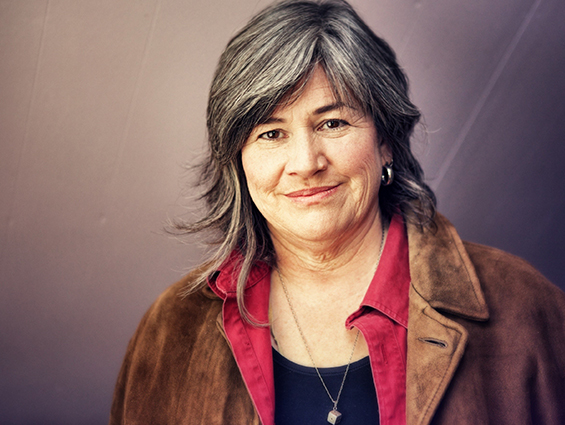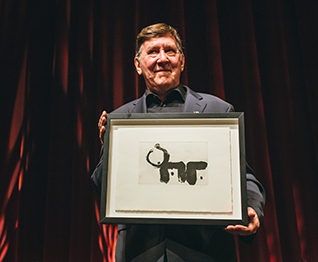Guy SIMARD: Recipient of the 2023 Gascon-Thomas Lifetime Achievement Award
INTERVIEW with Guy Simard, by Béatrice Germain (Création et Production, 2023)
The video is in French
BIOGRAPHIE
The artistic and professional career of Guy Simard (Création et production, 1975) is replete with experiences and projects in theatre, dance, opera, circus, architecture, scenography and teaching. Through his involvement in hundreds of productions as a lighting designer, technical director, stage manager, production manager or technical consultant, he has acquired a strong reputation in Quebec, in the rest of Canada and around the world.
In Montreal, his collaborations with several theatre companies have earned him three Masques awards and ten nominations from the Académie Québécoise du Théâtre. He also received the Fondation Jean-Paul Mousseau award in 1996 for his innovation, his constant research and the high quality of his artistic work.
In the United States, Europe, Asia and Australia, some thirty prestigious institutions have appreciated his skills and artistic vision for many years in opera.
Alongside his artistic and technical work, he has always made room for teaching and training, in particular by giving courses and workshops at the National Theatre School of Canada and the Institut Supérieur des Techniques du Spectacle in Avignon.
Guy Simard is also one of the founding members of Trizart Consultations, a company offering design and consulting services for the development and rehabilitation of public and performance venues (Espace Go, Monument-National, the Capitol Theatre in Québec City, La Licorne).
Here is Guy Simard’s speech at the Gascon-Thomas Award Ceremony on March 17th, 2023
I would like to thank the Board of Governors for creating this award, as well as the staff and jury members who accorded me this honour.
I am very touched and honoured to be part of such a select group of people who are passionate about theatre.
Having worked with many of them, including André Brassard, Jean Louis Millette, Paul Buissonneau, Janine Sutto and Jean Pierre Ronfard, I can speak to their characteristic generosity. They have never spared any effort or counted the hours spent bringing a show to fruition. Their work was always done with the utmost respect. They have all, in their own way, paved the way and I have learned a lot from them.
The Great Adventure
I first set foot on this stage at 9:30 a.m. on September 4, 1973, to begin “La semaine de pratique au théâtre.” I was one of eight students starting our first year at the Section technique française. It was the beginning of an adventure that lasted two years. At that time, José Descombes, originally from Switzerland, was in charge of the section and demanded discipline, rigour and punctuality. Normal for a Swiss!
Technically, we were supervised by Freedy Grimwood, a Brit who was the Technical Director of the Monument National. He and I had some fascinating discussions over wine in his office. In fact, I learned my passion and love of wine from him!
I would be remiss not to mention the work of Stanly Wegging, Head of the Carpentry Workshop, Léo Poulin, our ghost at the Monument National. He was the caretaker and lived right by the stage where the cafeteria is now located. He was always ready to help us, day or night.
Michael Eagan, a technical drawing teacher who spoke French with a southern New Brunswick Anglophone accent, was a lover of Patsy Galant, the disco queen of the day, and designed the sets for her shows.
Jean-Claude Germain, of course, for the history of Quebec theatre. He could talk for hours, even days, without stopping.
Jacques Languirand talked about the new technologies of the time that had been developed for Expo 67, namely slide projection and 16 mm films, audiovisual and mechanized set movements.
We were in very close contact with the Interprétation section, which was under the artistic direction of André Pagé, who came from the world of television, children’s programs. His team was made up of young and dynamic artists, including Michele Rossignol, Roger Blay as director and performer, poet Michel Garneau, and musician André Angelini.
And finally the great costume designer, François Barbeau, as set design manager.
In short, we were in good hands.
Francis Reid, a British lighting designer, teacher in London, author of several books on lighting and lighting manager for the prestigious Glyndebourne Festival Opera, delivered our lighting courses as a series of lectures and workshops. He taught me that a lighting engineer should behave with discretion, philosophy and humour. He also introduced me to going to London pubs for fish and chips and beer.
And on May 9, 1975, on this very stage, together with Charles Maher, Louise Lemieux and Pierrette Amiot, we received our diplomas.
The Teaching Years
Initially, as an instructor, I mainly taught technical courses.
There was no lighting designer at that time. Usually, the head electrician handled the lighting under the guidance of the director or set designer and adjusted the lights to obtain the effects requested by the latter.
Towards the end of the 1970s, I was called in to train production students who were to use the lighting console for the big set at the Monument National. At that time, the rather rudimentary lighting system consisted of about 40 dimmers and a console with two preparations.
In the early 1980s, I was asked to create a course in electricity for the stage.
A very technical course that took us “from the hydroelectric plant to the socket in your home,” including the main connections and circuits used in the theatre.
At the same time, as technical director at the Compagnie Jean Duceppe, I noticed that the lighting designers’ plans differed considerably. The visual organisation of the plans and the symbols the lighting designer were using varied from one to another, causing frequent confusion for the chief electricians who had to decipher the various codes. This caused many misinterpretations and often caused delays during installation weeks. Also working outside of Quebec, I learned that there were North American standards that all American lighting designers used for lighting design.
All their plans were drawn in accordance with USITT standards. So I proposed that the School set up a course called “Standards graphiques” to ensure that the lighting plans would meet these standards.
In the mid-1980s, I became technical director and resident lighting designer for Opéra de Montréal. It was an opportunity to welcome and assist great American lighting designers.
They used new database software created by lighting designer John McKernon who worked regularly on Broadway. This software, called Lightwright, was used to compile and generate detailed information for all the projectors drawn on the plans and to maintain an inventory of the projector circuits and control numbers required for the show. It also meant that a plan’s various gelatin colours, lighting devices and circuitry requirements could be assessed quickly and monitored throughout the installation process. A true revolution. I started using this software and then suggested a course, which became the Lightwright course, to the School.
Then, in the early 90s, I was asked to develop a course to help third year students draw and design lighting plans for productions taking place on large stages.
I knew of hundreds of books on stage lighting, the majority of which were either American or British.
These books all have the same structure and they all develop, more or less, the same themes. Tracing the history of theatrical lighting methods used from Antiquity to the modern era of the 1980s by way of the candle, the oil lamp, gas and finally electricity. Next come chapters on lamps and optics intended to help determine which wattages and lenses to use, how to position lighting fixtures, and which systems and basic rules are relevant to achieving constant, even and hole-free lighting. The same goes for using colours to achieve specific atmospheres.
But this would all be stated in a technical, mathematical way.
Very few of these books talk about the quality of the light, the atmospheres created and the dramaturgy of the light. Most of these books give recipes for successful lighting, and the greater the reputation of the author, the better the reputation of the book.
We might draw a parallel with cookbooks.
The success of the book derives directly from the reputation of the chef who signs it.
When it came to structuring the course, I asked myself: what should I relay and how should I relay it? Intuitively, I wanted to pass on what I had learned that could not be found in the books.
How to design and use light so that it becomes a unique, relevant and important component of a show. While I was reflecting, a director reached out to me.
He proposed that I form a group with his colleagues and give them a course on lighting techniques. They wanted to learn the basic rules of lighting, the different types of projectors, which gelatin colours to use and where to put the projectors—in short, how to communicate with lighting designers using technical language. I found this request peculiar: learning the technique to obtain an artistic result. I quickly decided that this was not the best way to go. It was at this point that the idea of creating a lighting design workshop for students in the Production section, those potential future lighting designers, came up. A specific three-day workshop which quickly summarized, at the beginning of the workshop, what was taught in the books.
In order to structure my lessons, I asked myself again: what should I relay and how should I relay it? Intuitively, I wanted to pass on what was not written in the books, but to pass on the basics of light creation. This workshop was followed by another, week-long production workshop dedicated to giving the students a basis for expressing their artistic ideas and visions and to enabling them to interact with other creators and directors. A lighting designer guided the participants in this workshop and a director stimulated discussion and conveyed the artistic vision of the project to the actors.
I started from the principle that “a picture is worth a thousand words” in order to create, with my collaborators, the beginnings of a discussion based on visual representations that illustrate a specific vision of space, a desired atmosphere and the state of mind of the characters.
In summary, most of the course derived from the students’ artistic visions and how to bend the rules, through trial and error, to realize the full potential of light.
I am very grateful that, over the decades, the various directorates have been able to find the budgets, the space and time in the schedule to enable all of these courses to exist.
Many thanks to Pierre Phaneuf, Michel Gosselin, Louise Roussel and Catherine La Frenière. I am also very pleased that lighting training is currently being provided by a great team consisting of:
Martin Labrecque and Alexia Burger, Laboratoire conceptuel d’éclairage,
Nicolas Descoteaux, Atelier d’éclairage—Photométrie et colorimétrie,
Saturnin Goyer, Initiation à la console d’éclairage ION-ETC,
Chantal Labonté, Initiation aux techniques d’éclairage,
Zacharie Filteau, Initiation à la console d’éclairage Grand Ma,
Anne-Catherine Simard-Deraspe, Standards graphiques and Électricité Logiciel Vectorworks.




Commentaires